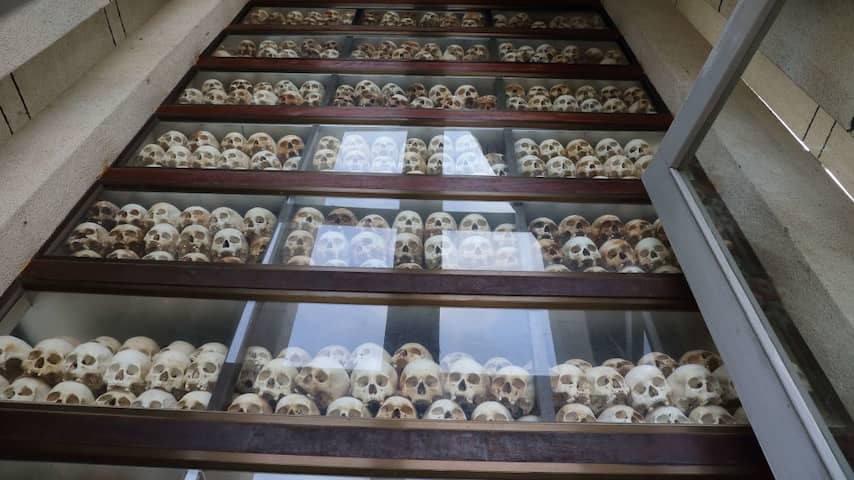
Three Cambodian sites used by the Khmer Rouge as torture centers and execution grounds have been added to the UNESCO World Heritage List. Fifty years ago, the communist regime of Pol Pot came to power, after which 1.7 million Cambodians died.
The infamous former S-21 prison in the capital Phnom Penh is one of the sites. Around fifteen thousand people were imprisoned and tortured in the former school building. Today, the building serves as the Tuol Sleng Genocide Museum. The M-13 prison has also been added by UNESCO.
Choeung Ek is the third location, about 15 kilometers south of Phnom Penh. It is one of the ‘Killing Fields’ used by the Khmer Rouge as an execution site and mass grave. Cambodian journalist Dith Pran coined the term. In 1984, the film Killing Fields was made about his life, that of photojournalist Sydney Schanberg, and the horrors at Choeung Ek.
Regarding the inclusion on the UNESCO World Heritage List, Prime Minister Hun Manet says that it “may be an eternal reminder that peace must always be defended.” According to Youk Chhang, director of the Documentation Center of Cambodia, the country still struggles with the “painful legacy of mass murder, torture and atrocities.” He believes that inclusion on the list can help educate generations who did not experience the period.
The communist Khmer Rouge came to power in 1975 after the capture of Phnom Penh. The inhabitants of the city were driven to the countryside to work there under harsh conditions. Society had to be transformed into a communist ideal. This was followed by four years of mass murder and torture.
In 1979, Vietnamese troops invaded the country and ended the rule of the Khmer Rouge. An estimated 1.7 million people, about a quarter of the population, died during that period.